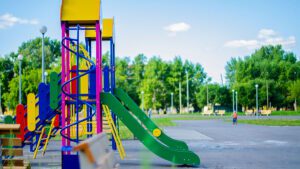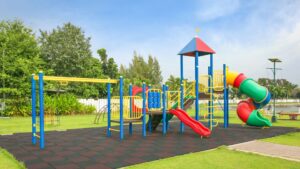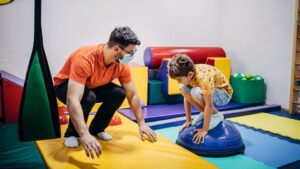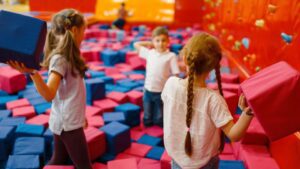Playgrounds are essential spaces for children to play, exercise, and develop important physical and social skills. Whether you’re planning a playground for a school, park, or community center, understanding the different types of playground equipment is key. In this glossary, we’ll explore common playground equipment names and their functions, ensuring you’re equipped with the right knowledge when planning your next playground project.
Introduction to Playgrounds
Playgrounds offer children a safe and stimulating environment to develop essential skills, from physical activity to social interaction. Well-designed playgrounds accommodate kids of different age groups and abilities, offering diverse play equipment like swings, slides, and climbers that promote development. Understanding the various playground equipment terms and categories will help you create a fun and functional space for children to enjoy.
Traditional Playground Equipment Names
Over time, playground equipment has evolved to meet modern safety standards. Some of the familiar pieces have been updated or renamed to improve safety and accessibility. Let’s explore traditional playground equipment names and the modern variations of each piece.
1. Merry-Go-Round
Also known as spinners, roundabouts, or carousels, merry-go-rounds are classic playground favorites where children spin around by pushing the equipment. Although still common, the term “merry-go-round” is often used interchangeably with spinning playground equipment, which has evolved to meet modern safety guidelines set by the CPSC (Consumer Product Safety Commission).
2. Seesaw (Teeter-Totter)
The seesaw, also known as a teeter-totter, allows two children to ride up and down. New safety features, such as spring centers to cushion impacts, have replaced older versions. The maximum angle for a traditional seesaw is now limited to 25 degrees to ensure safe play.
3. Giant Stride
The giant stride was once a popular playground feature, consisting of a tall pole with ropes hanging down. Children would hold onto the ropes and run around, creating a spinning motion. However, due to safety concerns, this piece of equipment has been largely phased out and is no longer recommended by the CPSC.

4. Monkey Bars
Monkey bars are horizontal ladders suspended above the ground, where children swing from bar to bar, improving their upper body strength and coordination. Over the years, they’ve been adapted into various shapes, like ring climbers or overhead climbers, offering more challenging and dynamic experiences for kids.
5. Still Rings
Still rings, similar to those used in gymnastics, are suspended from chains and allow children to practice hanging and swinging. These are often referred to as therapeutic hand rings due to their benefits in building upper body strength.
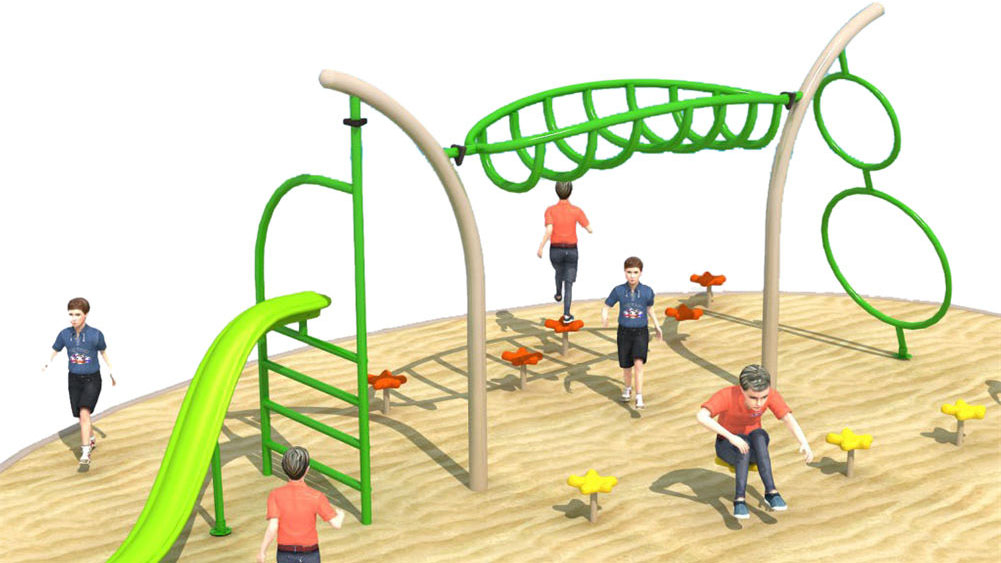
Modern Playground Equipment Names
Modern playgrounds now feature a range of new equipment designed to maximize fun, safety, and accessibility. The addition of innovative equipment encourages active play, coordination, and critical thinking. Here’s a look at the contemporary playground equipment names that are making waves in today’s playground designs.
1. Swings
Swings remain a playground staple, but there are many variations to consider:
- Accelerator Swing: A large, disc-like swing that allows multiple children to ride together.
- Generation Swing: A swing that combines an enclosed seat for toddlers and an open seat for adults, promoting family interaction.
- Viper Swing: A group swing with a rope design, where cooperation is key for achieving movement.
- Inclusive Swing Seat: Designed for children of all abilities, these seats provide a safe and comfortable ride for kids with different needs.
2. Slides
Slides are still among the most beloved playground equipment. Variations include:
- Tube Slides: Enclosed slides for a thrilling, fast ride.
- Curved Slides: Wavy or spiral slides that add extra excitement to the ride.
- Tower Slides: Free-standing slides attached to a tower-like structure, ideal for larger play systems.
3. Playground Climbers
Climbers are an exciting way for kids to develop strength and coordination. Modern climbers come in various forms:
- Geodesic Climbers: Dome-shaped climbers made of interconnected metal triangles.
- Vine Climbers: Climbers designed to resemble natural vines for a more adventurous experience.
- Vertical Climbing Walls: For older kids, vertical walls offer a more challenging climb.
4. Spring Riders
These are classic pieces that remain a fun, imaginative play element. Spring riders often take the form of animals or vehicles and allow kids to bounce back and forth, promoting balance and coordination.

5. Spinners
Spinners are similar to the old merry-go-round, but with more modern designs and safety features. Types include:
- Barrel Ride Spinner
- Saddle Seat Spinner
- Whirl Spinner
These provide an exhilarating spinning experience and help develop a child’s sense of balance and coordination.

6. Sensory Playground Equipment
Sensory play equipment engages children through their senses, enhancing cognitive and motor skills. It can include:
- Musical Panels: Instruments such as xylophones and drums that stimulate auditory senses.
- Tactile Play Panels: Textured panels designed to engage the sense of touch.
- Sensory Walkways: Pathways that encourage exploration through different textures.
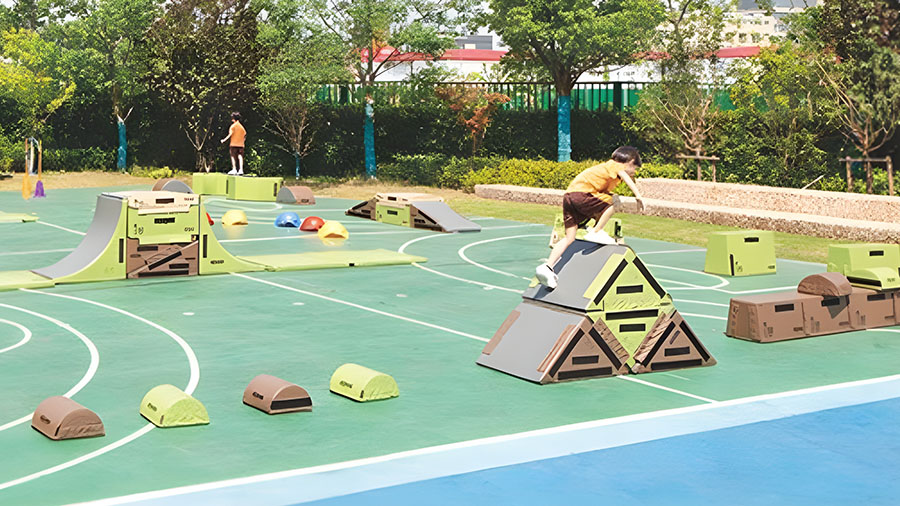
Site Amenities
When designing a playground, site amenities are just as important as the play equipment. They ensure comfort and convenience for parents and caregivers. Common site amenities include:
- Benches
- Picnic Tables
- Trash Receptacles
- Bike Racks
These features help transform a playground into a welcoming community space for everyone.
Conclusion: Understanding Playground Equipment Terminology
Having a solid grasp of playground equipment terms helps you make better decisions when designing or upgrading a playground. From swings to spinners and sensory panels, each piece of equipment serves a unique purpose in fostering physical activity, social skills, and imagination. Prioritizing safety, accessibility, and inclusivity ensures that the playground is enjoyable and safe for all children.

